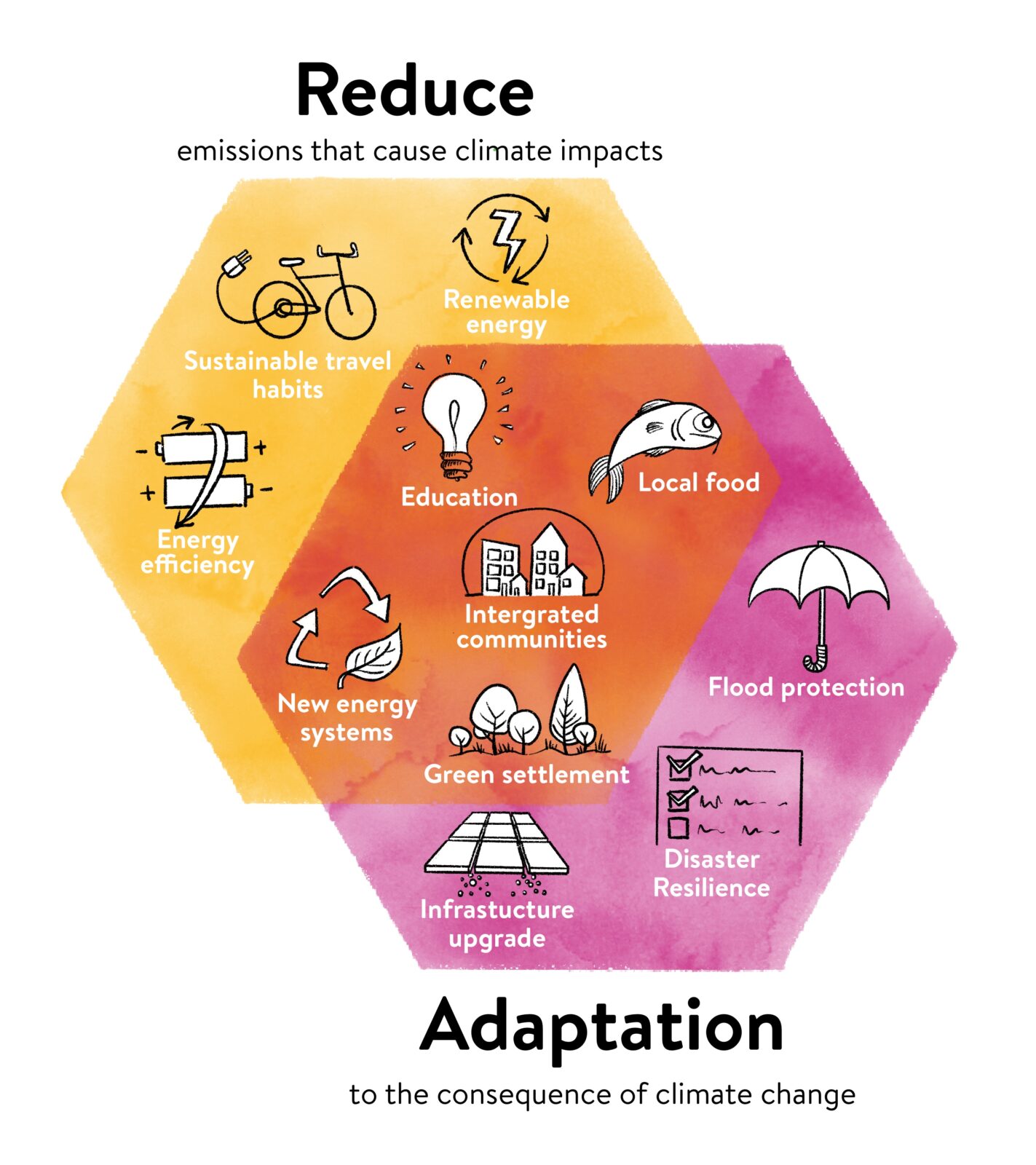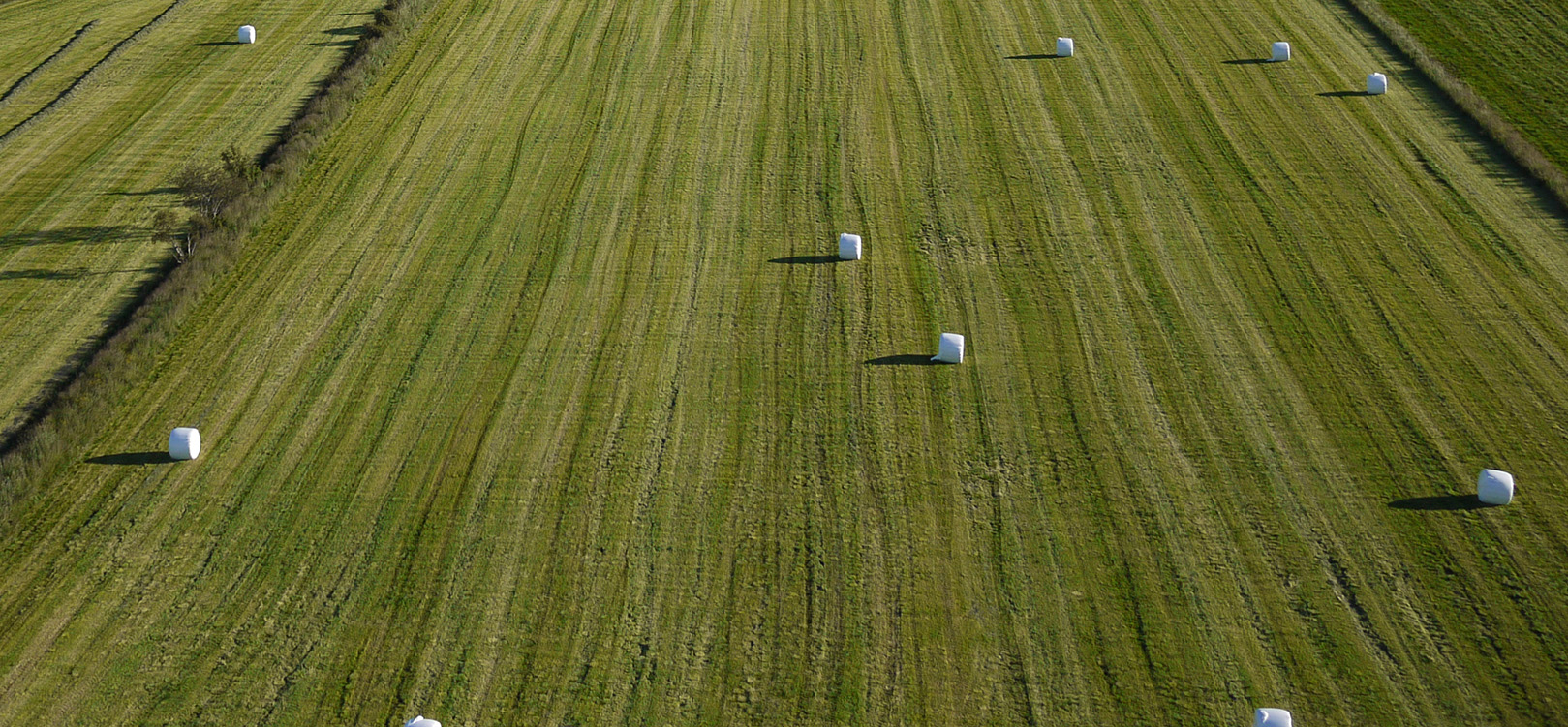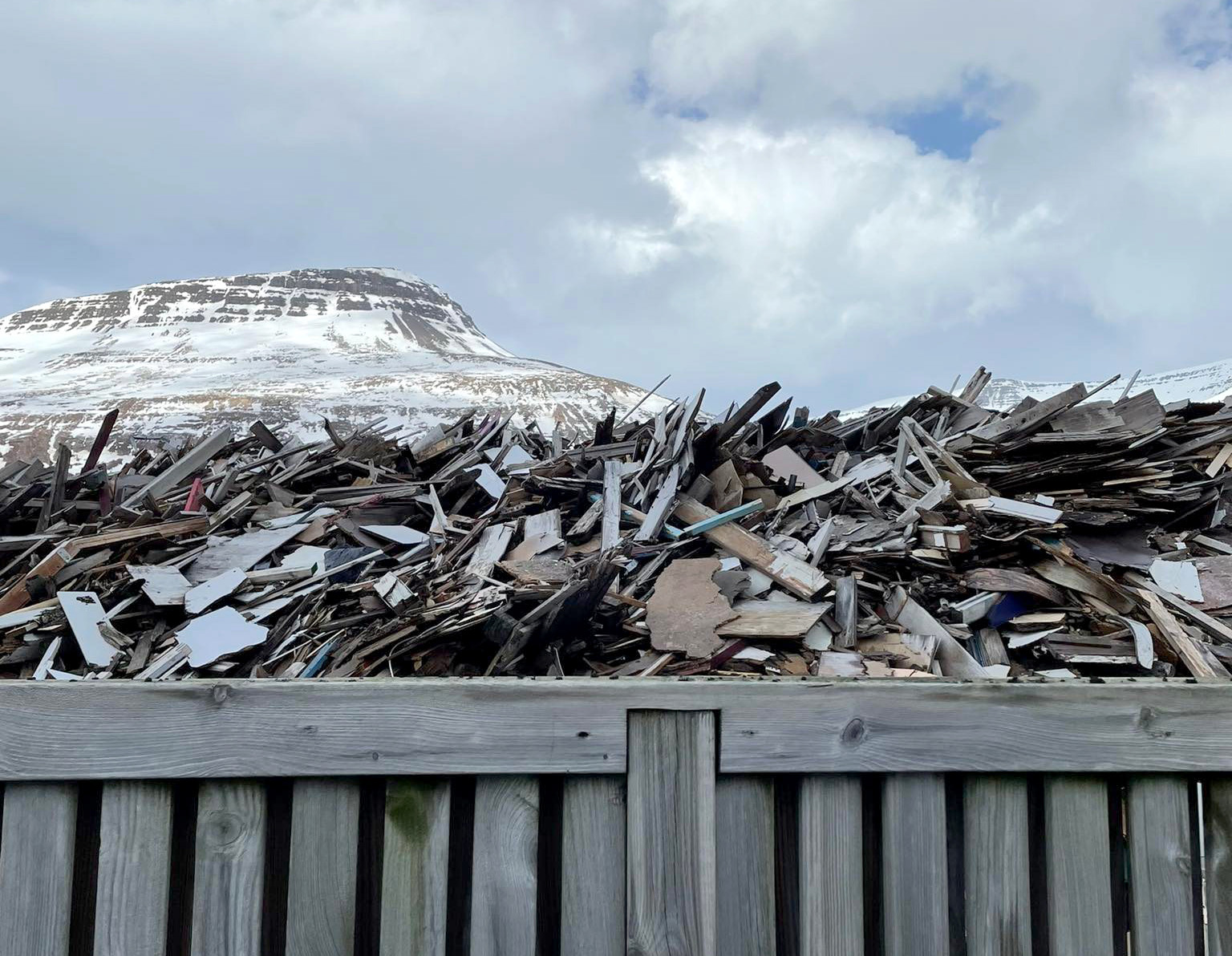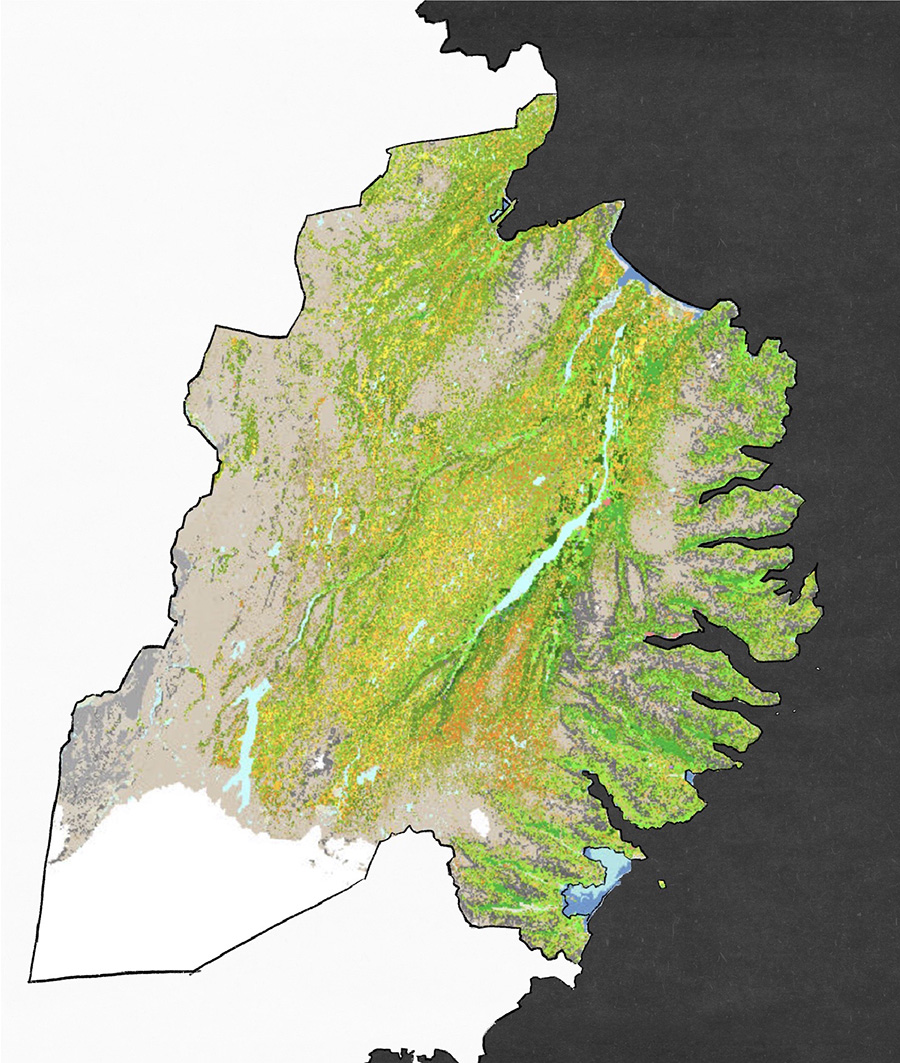3.2 Global and Local Ecosystems
Carbon neutrality will be achieved in as many areas of the environment, industry, and society as possible, with strengthened green infrastructure and healthy, diverse ecosystems.

D. Climate Policy
D.1 Achieving Carbon Neutrality as Soon as Possible in Environmental, Industrial and Social Sectors
During the development of the master plan, land use, settlement patterns, and transportation should be managed to reduce greenhouse gas emissions and increase sequestration.
Active travel modes and public transportation should be well-supported during the development of the master and detailed plans and the design of public spaces. During the preparation of the master and detailed plans and in execution, soil and vegetation that already store significant carbon stocks should be protected.
Support energy transitions by providing space in planning and working on the development of infrastructure such as charging stations for electric vehicles and fuelling stations for methane, hydrogen, and other climate-friendly fuels, as well as infrastructure for electrification of ports.
Encourage increased carbon sequestration, such as through afforestation, other vegetation cultivation, soil conservation, wetland protection, and restoration where appropriate considering other uses.
Encourage the reduction of greenhouse gas emissions in agriculture, such as through improved utilization and management of fertilizers and better livestock feeding practices to reduce enteric fermentation.
Work towards increasing recycling and reuse and reducing landfilling, especially of organic waste.
Municipal institutions and administrations should consider climate impacts and other environmental perspectives in all procurements and construction activities.
Encourage companies to adopt climate-friendly operations and environmentally-friendly construction.
Encourage residents to adopt a climate-friendly lifestyle, considering travel modes, consumption habits, and food waste.
D.2 Increasing Resilience to Climate Change
During the preparation of master and detailed plans, land use, and project preparations, consider the long-term challenges posed by climate change and create conditions for climate-resilient development. This includes, for example, responses to and defences against rising sea levels, coastal erosion, water floods, tidal waves, glacier retreat, permafrost melting, landslides, intense precipitation, droughts, severe storms, and wildfires.
D.3 Strengthening Green Infrastructure in Urban Areas
During the preparation of master and detailed plans, consider how green infrastructure, such as forest patches, parks, street trees, and blue-green/sustainable stormwater solutions, can be used to mitigate and address the impacts of climate change on urban areas.

Explanations of Climate Policy
Adaptation to Climate Change
One could say that the residents of East Iceland experienced direct effects of climate change when landslides hit Seyðisfjörður in December 2020, taking parts of the older settlements of the town following unusually heavy rains. In early 2022, significant damage occurred to the seawalls in Vopnafjörður during a storm that swept over East Iceland. These events highlight the importance of mapping natural hazards caused by climate change and adapting settlements and infrastructure accordingly to increase resilience and resistance to changes. In addition to landslides, avalanches, and sea encroachment due to extreme weather and rising sea levels, the main threat in East Iceland is likely from potential wildfires and flooding in inhabited areas.
It is essential to stabilize the soil with vegetation or barriers to prevent landslides. The East Iceland Municipalities Association has called for state funding to build landslide barriers in the area.42 The primary measures to counteract sea encroachment are the construction of breakwaters, but it is also crucial to ensure in planning that the elevation of new developments is suitably above sea level. Due to the potential for flooding in inhabited areas, it is important to increase permeability by implementing blue-green stormwater solutions, where rainwater and snowmelt are directed to permeable surfaces instead of underground stormwater systems. Green areas slow water flow and clean pollution from stormwater before it enters recipients, such as the sea or wetlands.43
Land Use and Agriculture
In Iceland, a large portion of greenhouse gas emissions is due to land use.44 With the restoration of wetlands, ecosystems are restored, and the release of carbon dioxide stops. Therefore, it is important to map drained land areas that are not in use and are suitable for wetland restoration.45 It is also important to utilize development land effectively and not spread urban centres too far. A significant part of Iceland’s greenhouse gas emissions comes from agriculture, primarily due to methane emissions from ruminant animals. Emissions from land use and agriculture can be reduced, for example, with organic farming, increased arable farming on undrained land, more afforestation, wetland restoration, methane processing from manure, and the use of environmentally friendly fertilizers and feeds. Afforestation is more extensive in East Iceland than in any other part of the country, and it is important to continue this work to sequester carbon.46
Energy Transition in Transportation and Changed Travel Habits
In East Iceland, many population centres are scattered over a large area, and road transport is a significant emission factor in the region. Therefore, it is important to promote an energy transition in transportation by improving access to fast-charging stations and other environmentally friendly energy sources. Equally important is to promote changes in travel habits through improved public transportation and good walking and cycling connections within and between population centres where it is feasible to bike or use smaller electric vehicles between them.47 Lastly, emissions from transportation can be greatly reduced by decreasing travel needs, for example, by enabling people to work remotely and supporting online shopping. In addition, it is important to work towards the electrification of ports and industry as much as possible.

Waste
The circular economy focuses on sorting, reusing what can be reused, recycling what cannot be reused, and composting organic waste, as landfilling organic waste is prohibited from January 1, 2023.48 The circular economy aims to reduce greenhouse gas emissions and decrease the land area required for landfills. Cooperation between East Iceland municipalities in waste management is important in this regard, both in reducing waste generation and promoting sorting and reuse in the region. Increased education for individuals and companies on the importance of recycling and reuse is also important.
Municipalities can be role models for environmentally friendly procurement and construction, for example, by implementing green accounting, reducing the negative environmental impact of their operations, and raising environmental awareness among employees. Another approach is to utilize existing buildings as much as possible instead of demolishing and building new ones. The use of environmentally friendly building materials also matters in this context.49

E. Policy on Ecosystems and Biodiversity
E.1 Ecosystems on land, in water, and at sea should remain healthy, and ecosystem diversity should be maintained or increased.
Resource use, planning, and construction should aim to maintain ecosystem health so that they can provide resistance during crises.
Efforts should be made to restore disrupted ecosystems.
Ecosystems of high conservation value, such as those notable for rarity, species richness, fertility, and/or carbon storage, should be protected.50
Support should be given to research on the ecosystems of East Iceland and to disseminating information about them.
E.2 Strengthening Vegetation and Halting Soil Erosion
Efforts should be made to halt erosion, including land degradation caused by running water.51
Monitoring of vegetation use should be carried out to prevent overexploitation.

Explanations of Policy on Ecosystems and Biodiversity
Ecosystems
The Icelandic Institute of Natural History has developed a classification system for ecosystems that describes the characteristics of regional units in terms of vegetation, wildlife, soil, and climate. Ecosystems on land, in freshwater, and in the intertidal zone are classified and defined. Classifying land into ecosystems provides an overview of unique and rare ecosystems, their characteristics, and their distribution.52
Classifying land into ecosystems is important for planning, environmental impact assessments of plans and projects, and decision-making regarding land use and conservation areas.53
Land Restoration and Soil Conservation
The objectives of the Soil Conservation Act aim to increase carbon sequestration by restoring ecosystems. Efforts should also be made to rebuild and restore disrupted ecosystems. Additionally, it is important to promote the resilience and adaptability of ecosystems to natural disasters and natural hazards. The Grólind project, which assesses the status of vegetation and soil resources in Iceland, is in this regard.55
Waters, Rivers and the Sea<
Water is a resource that must be handled and utilized responsibly. It is necessary to biodiversity and the natural state of freshwater and coastal marine ecosystems and to ensure the quality of groundwater.56
